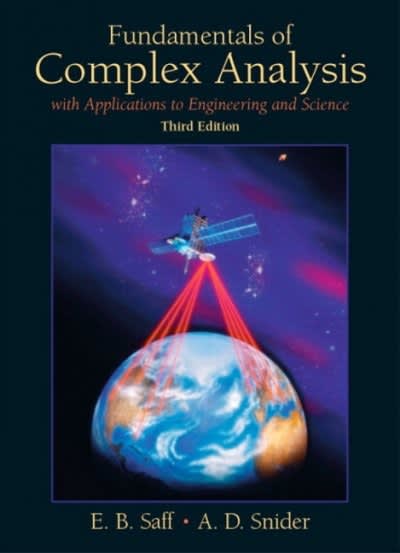Question
Consider the cabbages data set provided with this exam; the data itself is in cabbages.csv and the docu- mentation is provided in cabbages.txt. 1. Using
Consider the "cabbages" data set provided with this exam; the data itself is in cabbages.csv and the docu- mentation is provided in cabbages.txt.
1. Using symbols (e.g., ?? ? = ? + ?? + ?? ? , which is the basic model for an ANOVA), write a simple linear model describing the relationship between weight of a head of cabbage and its ascorbic acid content. What do each of the symbols represent?
2. Using only basic math functions, such as sums and exponents, and simple summary statistics, such as means, and the ordinary least squares procedure, estimate the coefficients in this model from the data provided.
3. Using your software of choice, show that you have calculated the coefficients correctly.
4. Provide a figure that helps visualize the relationship between head weight and ascorbic acid in this data. This figure should look professional: include proper axis labels in words (not variable names), a
title, appropriate shapes and colors, and so on.
5. Can you improve your model by considering the cultivar and planting date of each cabbage? Using
software to estimate coefficients, compare the simpler model you wrote above with the more compli- cated model considering more information. What measures or values did you use to compare the two models? Which model is better, and why?
6. Interpret the coefficient associated with the cultivar of the head of cabbage.
7. How would you interpret the coefficients associated with the planting date? Why is there more than
one? What does each coefficient estimate mean?
+ cabbages package:MASS R Documentation
Data from a cabbage field trial
Description:
The cabbages data set has 60 observations and 4 variables
Usage:
cabbages Format:
This data frame contains the following columns:
'Cult' Factor giving the cultivar of the cabbage, two levels: 'c39' and 'c52'.
Date Factor specifying one of three planting dates: 'd16', 'd20' or 'd21'.
'HeadWt' Weight of the cabbage head, presumably in kg.
'VitC' Ascorbic acid content, in undefined units.
Source:
Rawlings, J. O. (1988) _Applied Regression Analysis: A Research Tool._ Wadsworth and Brooks/Cole. Example 8.4, page 219. (Rawlings cites the original source as the files of the late Dr Gertrude M Cox.)
References:
Venables, W. N. and Ripley, B. D. (1999) _Modern Applied Statistics with S-PLUS._ Third Edition. Springer.



Step by Step Solution
There are 3 Steps involved in it
Step: 1

Get Instant Access to Expert-Tailored Solutions
See step-by-step solutions with expert insights and AI powered tools for academic success
Step: 2

Step: 3

Ace Your Homework with AI
Get the answers you need in no time with our AI-driven, step-by-step assistance
Get Started


